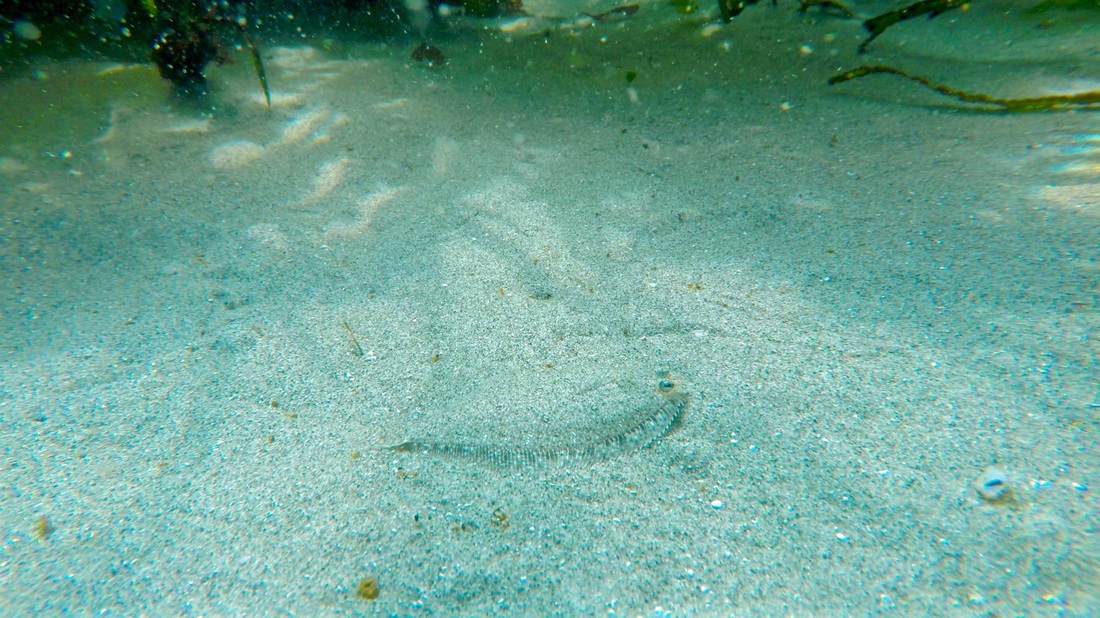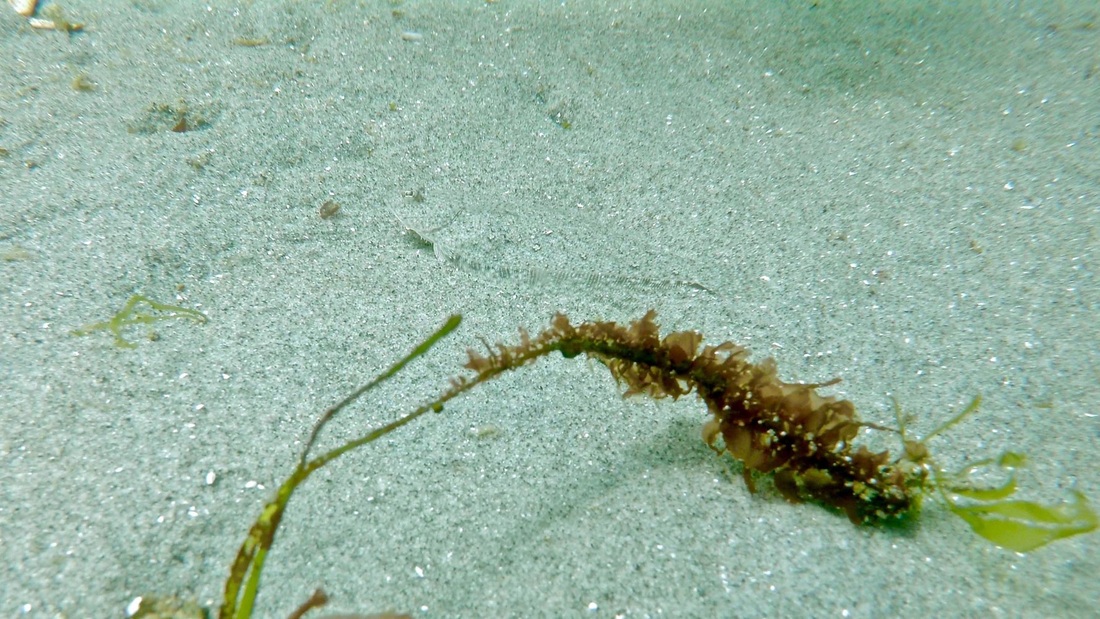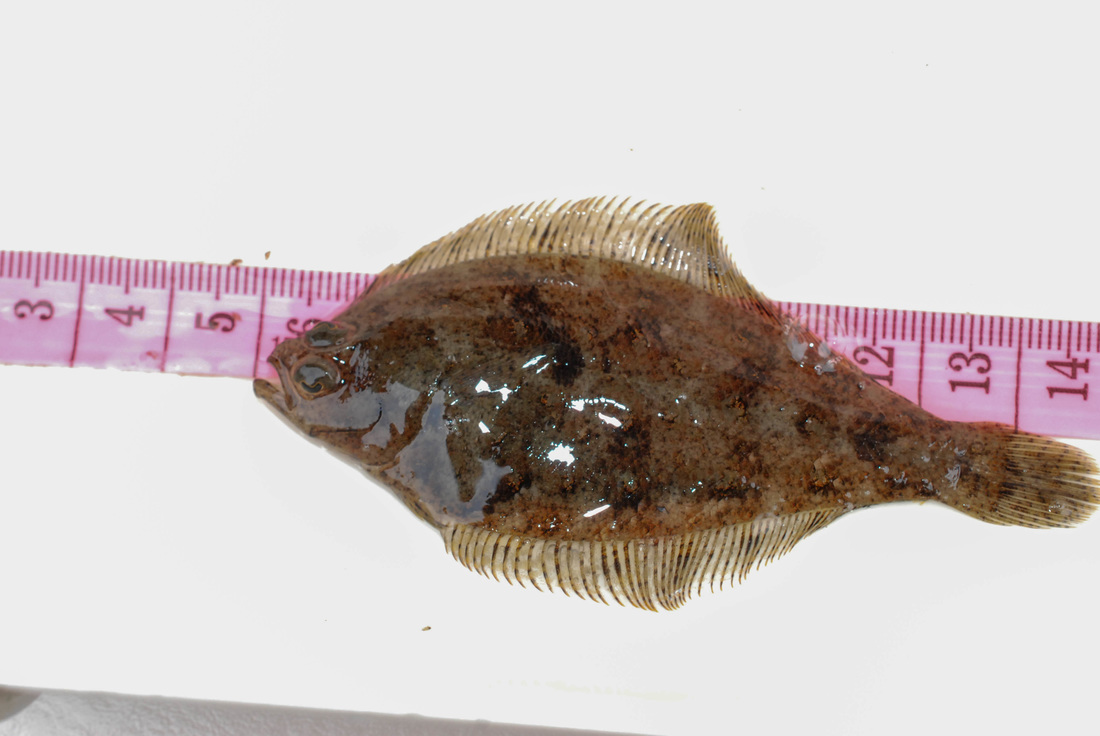Pacific sanddab, mottled sanddab, soft flounder • Citharichthys sordidus
Identification
The eyed (upward-facing) side of the Pacific sanddab is a dull light brown with brown, black, rust-red, yellow, or orange mottling. It is a left-eyed flounder, meaning both its eyes are on the left side of its oval to elongated body. Key identification features of this flounder is the presence of a bony ridge between the large eyes, long and pointed pectoral fins that extend to the eyes when projected forward, and a relatively straight, unbranched lateral line. This fish reaches 41 cm long.
Habitat & Range
This fish inhabits sandy- and muddy-bottomed locations and is commonly found at depths between 50 to 150 m, although it may be found as deep as 550 m and as shallow as 15 m. Its range extends from southeastern Alaska to Baja California, Mexico.
Similar Species
The speckled sanddab (Citharichthys stigmaeus) is more speckled than mottled, is missing the ridge between its eyes, and has shorter pectoral fins that don't extend as far forward as the eyes.
Human Uses
The Pacific sanddab is occasionally caught by trawl and longline fisheries in the Pacific Northwest; such fish are marketed as sole. It is also caught by recreational fishermen. In California it is sometimes considered a delicacy; Lamb and Edgell state that it is best served baked or fried.
The eyed (upward-facing) side of the Pacific sanddab is a dull light brown with brown, black, rust-red, yellow, or orange mottling. It is a left-eyed flounder, meaning both its eyes are on the left side of its oval to elongated body. Key identification features of this flounder is the presence of a bony ridge between the large eyes, long and pointed pectoral fins that extend to the eyes when projected forward, and a relatively straight, unbranched lateral line. This fish reaches 41 cm long.
Habitat & Range
This fish inhabits sandy- and muddy-bottomed locations and is commonly found at depths between 50 to 150 m, although it may be found as deep as 550 m and as shallow as 15 m. Its range extends from southeastern Alaska to Baja California, Mexico.
Similar Species
The speckled sanddab (Citharichthys stigmaeus) is more speckled than mottled, is missing the ridge between its eyes, and has shorter pectoral fins that don't extend as far forward as the eyes.
Human Uses
The Pacific sanddab is occasionally caught by trawl and longline fisheries in the Pacific Northwest; such fish are marketed as sole. It is also caught by recreational fishermen. In California it is sometimes considered a delicacy; Lamb and Edgell state that it is best served baked or fried.
References
Froese, R. and Ortañez, A. K. Citharichthys sordidus (Girard, 1854) Pacific sanddab. FishBase. Accessed 03/11/2015.
Lamb, A. and Edgell, P. Coastal Fishes of the Pacific Northwest. Revised. (2010). Madeira Park, BC: Harbour Publishing. P. 288.
Pacific Sanddab Citharichthys sordidus. Fishing & Shellfishing. Washington Department of Fish & Wildlife. Accessed 03/11/2015.
Authors and editors of page
Kelly Fretwell (2015).
Froese, R. and Ortañez, A. K. Citharichthys sordidus (Girard, 1854) Pacific sanddab. FishBase. Accessed 03/11/2015.
Lamb, A. and Edgell, P. Coastal Fishes of the Pacific Northwest. Revised. (2010). Madeira Park, BC: Harbour Publishing. P. 288.
Pacific Sanddab Citharichthys sordidus. Fishing & Shellfishing. Washington Department of Fish & Wildlife. Accessed 03/11/2015.
Authors and editors of page
Kelly Fretwell (2015).






